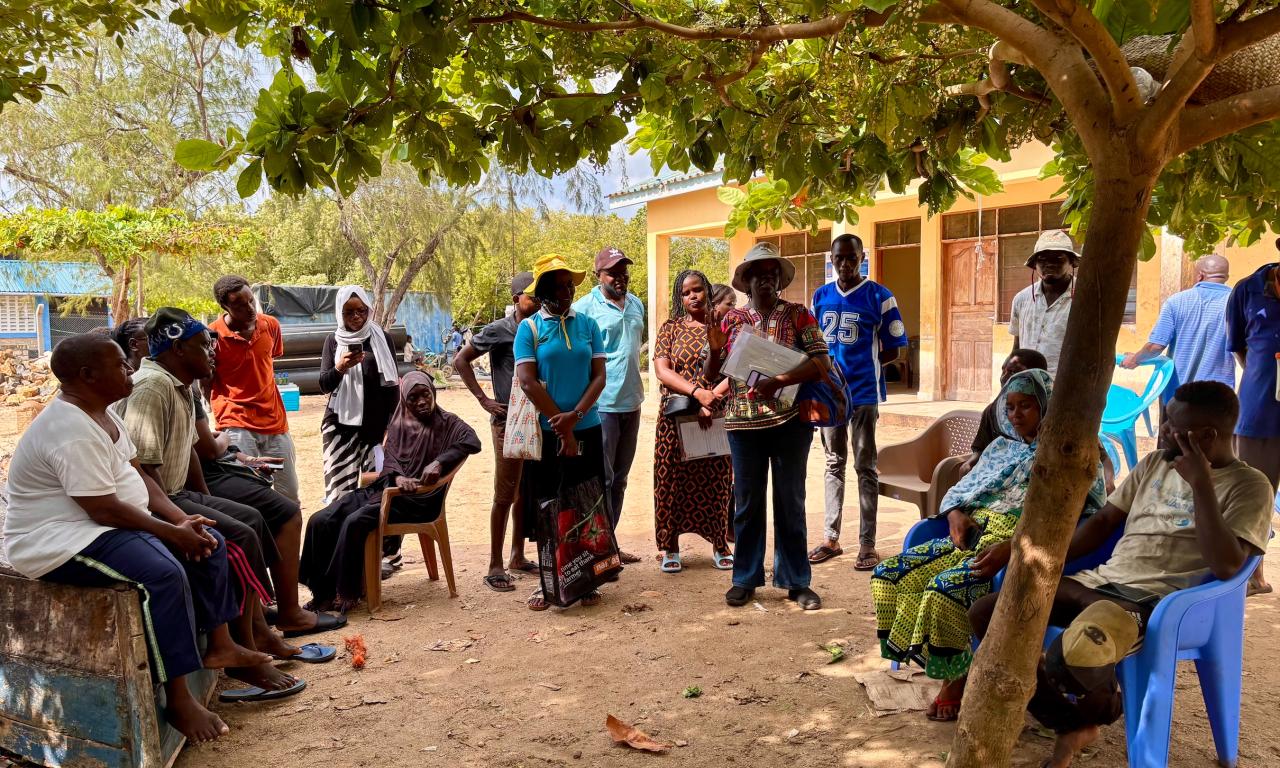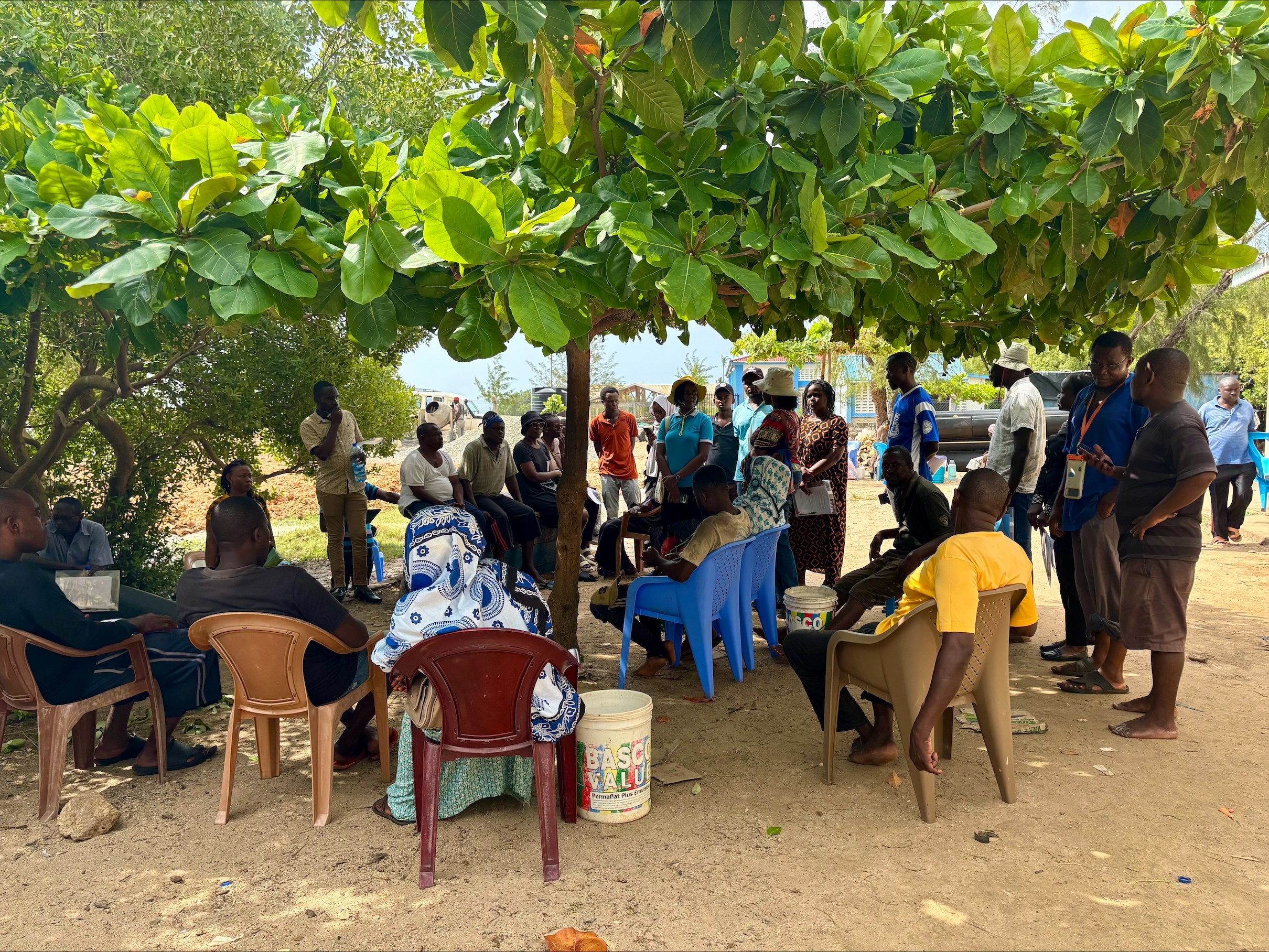
In December 2024, a leading-edge study by WorldFish and partners began uncovering how gender dynamics influence fish loss and waste in fisheries value chains. Researchers launched the study in Mombasa, Kenya, bringing together global and local institutions to address an often-overlooked challenge in fisheries—fish loss and waste (FLW). At the same time, they explored the intertwined issues of gender inequalities and and fish loss and waste in fisheries systems.
For the first time, this research combines two innovative methodologies: Gendered Value Chain Analysis (GVCA) and FLW assessment. This novel approach recognizes that gender norms and dynamics profoundly influence every aspect of the fisheries value chain, including how and why fish loss and waste occur.
The research is led by WorldFish, in consultation with the Food and Agriculture Organization (FAO), and working with partners: the World Resources Institute, Kenyan institutions including the Kenya Marine and Fisheries Research Institute (KMFRI), Coastal and Marine Resource Development (COMRED) and Pwani University.
"Addressing fish loss and waste requires pinpointing the hotspots along the value chain and designing climate-smart interventions that are both accessible and affordable. This approach not only reduces waste but also enhances resilience and sustainability for those who depend on fisheries for their livelihoods," said Dr. Aditya Parmar, WorldFish scientist and lead on Work Package 3 of Asia–Africa BlueTech Superhighway (AABS) which focuses on scaling climate-smart technologies for reducing fish loss and waste and adding value.

A Step Towards Empowering Women in the Fish Value Chain
Women are integral to the fisheries and aquaculture value chain, representing nearly half of the workforce. In developing countries, women comprise up to 90 percent of those engaged in post-harvest activities such as processing and trading,
Despite their significant contributions, they often encounter barriers such as limited access to preservation technologies, credit, and decision-making platforms due to gender norms and power dynamics. This limits their full potential, which in turn impacts the productivity and efficiency of the value chain. Simultaneously, fish loss and waste, primarily caused by spoilage and poor handling practices, threaten economic livelihoods and food security. By integrating GVCA with FLW assessment, the research team seeks to uncover the intersections of these challenges and develop gender-responsive strategies to reduce FLW effectively.
Sharing Experiences and Insights
The methodology combines quantitative and qualitative approaches. Surveys aim to capture sex-disaggregated data on labor division, access to resources, and loss quantification along the value chain. Focus group discussions with fishermen, fisherwomen and youth are designed to reveal how gender roles shape perceptions and practices around FLW along the value chain. “During these discussions, we aim to gain perspectives, among other themes, on fisher livelihoods, gender roles and gender norms in the fish value chain,” said Dr. Rahma Adam, Senior Scientist and Social Economic Inclusion Impact Lead at WorldFish. FGDs with youth are focused on their roles and contributions to the value chain, their challenges and aspirations.
Participatory tools such as value chain mapping analyze critical loss points and gender-specific challenges such as inadequate storage facilities or societal expectations that hinder women’s participation in training programs.
Importantly, the study aims to not only diagnose problems but also seek solutions. So far, this collaborative effort has leveraged knowledge exchange between international experts and local stakeholders. Workshops and online meetings have enabled researchers to share experiences and insights, ensuring that the recommendations are both globally informed and locally grounded.
As the study continues and moves to its next level, it is expected to influence policies and programs that not only reduce fish loss and waste but also empower women and youth engaged in the value chains. By placing gender at the heart of fisheries sustainability, this pioneering effort sets a new standard for research and practice in aquatic food systems.
